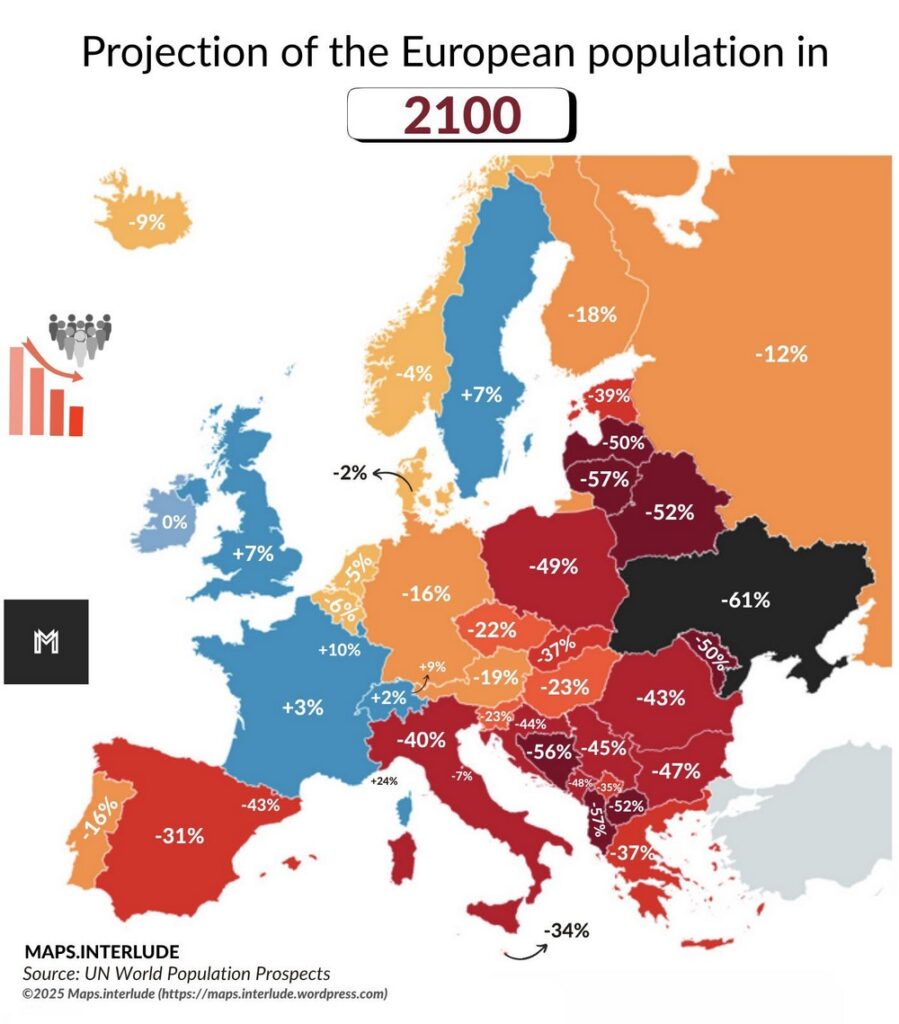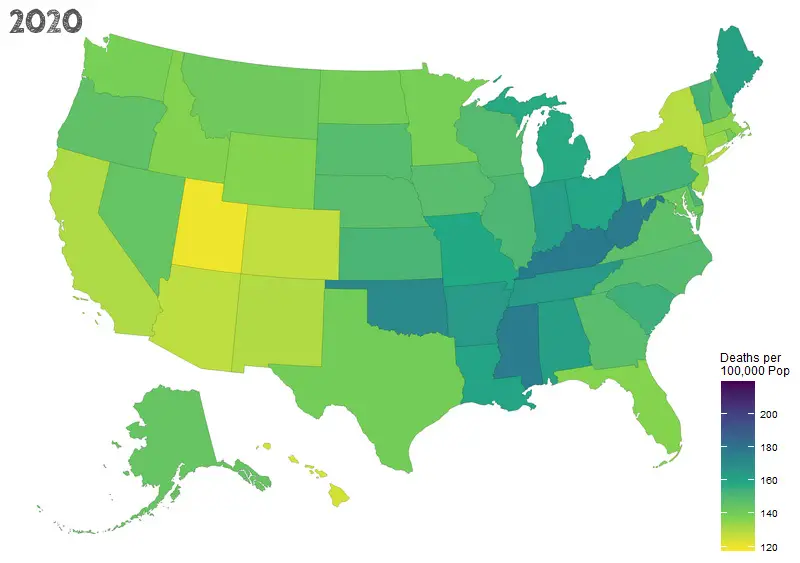Which European Countries Will Lose Half Their Population by 2100?”
Europe might not be as crowded by the end of this century as it is today. According to a map by MAPS.INTERLUDE, based on data from the UN World Population Prospects, many European countries are expected to lose a significant portion of their population by 2100. The projections are based on current trends in fertility, mortality, and migration, and the map paints a pretty clear picture: population decline is on the horizon for most of the continent.
The map, which you’ll find below, shows the percentage change in population from 2025 to 2100. While a few countries are expected to grow, the majority, especially in Eastern and Southern Europe, are heading in the opposite direction. We’re not talking about small dips either. In some places, the projected decrease is more than half of the current population.

So what’s driving this trend? Three forces are reshaping Europe’s demographic landscape: couples are having fewer children, populations are getting grayer by the decade, and young people are voting with their feet by moving elsewhere. Most European countries have fertility rates that fall well short of replacement level – think 1.3 or 1.4 children per woman instead of the 2.1 needed to maintain stable numbers. The result? Not enough young people coming up to support all those baby boomers heading into retirement.
Add emigration to the mix, and you get a perfect storm. Take Belarus, Ukraine, lithuania and Latvia – these countries have watched entire generations of young workers pack up for Western Europe, chasing better wages and brighter prospects. When your most productive citizens are heading for the exits, population decline becomes almost inevitable.
That seems to be making a difference. Nations like the UK, France, and Sweden are projected to keep growing, with increases of 7%, 3%, and 7% respectively by 2100. Luxembourg leads the pack with a projected 10% increase, while Ireland is expected to remain stable at 0%. This is quite the contrast to countries like Ukraine, Bosnia & Herzegovina, and Lithuania, which are all expected to shrink by more than half.
To give you a clearer view, here’s a table of the ten countries expected to lose the most people between now and 2100:
| Country | Population (2025) | Population (2100) | % Change |
|---|---|---|---|
| Ukraine | 36.7 million | 14.3 million | -61% |
| Bosnia & Herzegovina | 3.2 million | 1.4 million | -56% |
| Bulgaria | 6.3 million | 3.0 million | -52% |
| Hungary | 9.5 million | 4.7 million | -50% |
| Poland | 37.7 million | 19.2 million | -49% |
| Serbia | 6.5 million | 3.6 million | -45% |
| Croatia | 3.8 million | 2.1 million | -44% |
| Romania | 17.8 million | 10.1 million | -43% |
| Lithuania | 2.7 million | 1.7 million | -37% |
| Latvia | 1.8 million | 1.2 million | -33% |
These numbers are dramatic. Shrinking countries often face challenges like fewer workers, weaker economies, aging infrastructure, and shrinking towns. In some cases, entire villages are already being abandoned. Schools are closing, and healthcare systems are under strain as the population ages.
At the same time, countries that are growing or holding steady may be better positioned to adapt to the future. Immigration is a big factor here. Nations like France, the UK, and Sweden have long histories of welcoming people from abroad, and that has helped balance out demographic pressures.
Looking ahead, these demographic shifts will fundamentally reshape Europe’s economic and political landscape. The countries with the steepest population declines will face critical decisions about managing labor shortages, funding pensions, and maintaining infrastructure in increasingly empty regions.








